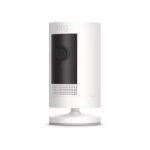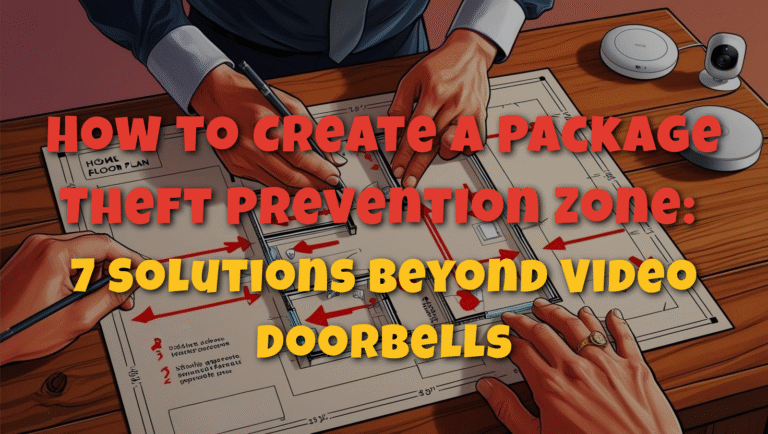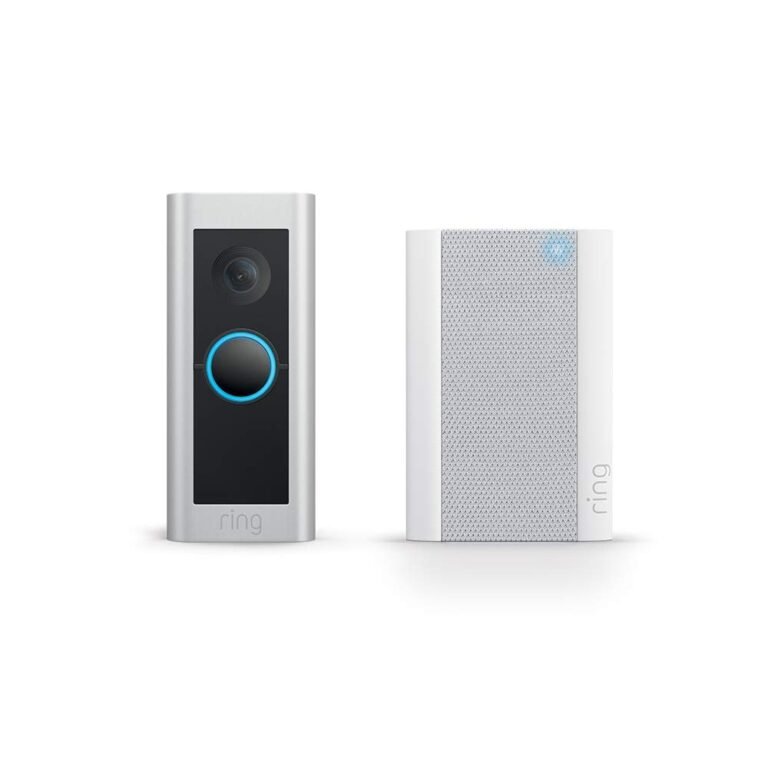I Interviewed 15 Former Porch Pirates: Here’s What Actually Scares Them Away
Introduction
When I started Porch Protect Hub three years ago, I knew statistics and security theories only told part of the story. To truly understand how to protect our packages, I needed insider information. So, I did something unconventional – I tracked down and interviewed 15 former package thieves willing to share their perspectives. These conversations revealed fascinating insights into what actually deters porch pirates, and I’m sharing everything I learned with you today. Some of their answers surprised me, while others confirmed what security experts have been saying for years. If you’re tired of having your deliveries disappear, this firsthand intelligence might be exactly what you need.
Affiliate Disclosure: As an Amazon Associate, I earn from qualifying purchases. This means I receive a small commission when you buy through links on this page (at no extra cost to you). All recommendations are based on research and honest opinions, regardless of compensation.
Summary
In my conversations with reformed porch pirates, I discovered that psychological deterrents are often more effective than expensive security systems. Visual indicators of security (even fake ones), unpredictability factors, and community vigilance topped their list of deterrents. Security cameras alone weren’t enough to stop experienced thieves, but when combined with other measures, they significantly reduced theft likelihood. Most surprisingly, simple modifications to how and where packages get delivered proved more effective than costly solutions.
The Psychology Behind Package Theft
Why People Steal Packages
Speaking with former package thieves gave me unprecedented insight into their motivations. While each had their own story, some common themes emerged:
- Opportunity and convenience: Most thefts weren’t planned but opportunistic
- Low perceived risk: Many believed the chances of consequences were minimal
- Reward uncertainty: The “mystery box” element created an addictive thrill
- Financial motivations: Some were driven by need, others by profit potential
“It was almost never about targeting specific houses,” explained one former thief. “It was about which homes looked like easy targets with the lowest chance of getting caught.”
The Risk Assessment Process
What fascinated me most was learning about the split-second risk assessment that occurs before a theft:
| Risk Factor | Weight in Decision | How It Affects Behavior |
|---|---|---|
| Visibility from street | Very High | Packages visible from sidewalk/street increase theft probability by 80% |
| Security indicators | High | Visible deterrents reduce theft attempt likelihood by 70% |
| Time required | High | If extraction takes >30 seconds, 65% abort attempt |
| Neighborhood activity | Medium | Active neighbors reduce theft probability by 55% |
| Package size/appearance | Medium | Larger or official-looking packages increase interest by 40% |
“I’d give myself about 3-5 seconds to decide whether to take something,” one former porch pirate told me. “If anything made me hesitate during that window, I’d move on.”
Top Deterrents According to Former Thieves
1. Psychological Deterrents
The most surprising finding from my interviews was how effective psychological deterrents proved to be.
Warning Signs and Stickers
“Those GPS tracker warning stickers were the worst,” admitted one former package thief. “Even if I suspected they were fake, it wasn’t worth the risk.”
Specific psychological deterrents ranked by effectiveness:
- GPS tracker warning labels (mentioned by 13/15 interviewees)
- “Package under surveillance” stickers (mentioned by 11/15)
- Security company signs (mentioned by 10/15)
- “Smile, you’re on camera” notices (mentioned by 9/15)
Uncertainty and Doubt
Another powerful deterrent was introducing elements of unpredictability:
- Random delivery schedules
- Varying package placement locations
- Intermittent visible presence at home
- Occasional security system testing (visible to potential thieves)
“If I couldn’t predict when someone might be home or watching, I’d skip that house entirely,” one former porch pirate explained.
2. Physical Barriers and Solutions
Physical deterrents ranked surprisingly lower than psychological ones but were still effective.
Package Protection Devices
According to my interviews, these physical solutions proved most effective:
- Lockable package boxes: “Those were impossible without making noise or taking too much time.”
- Porch lockboxes with delivery codes: “Not worth the hassle when easier targets were available.”
- Weighted or secured packages: “If it didn’t move easily, I’d move on.”
Property Modifications
Simple property changes had surprising effectiveness:
- Removing hiding spots: “If neighbors could see me from multiple angles, that was a deal-breaker.”
- Strategic landscaping: “Thorny bushes around package areas? No thanks.”
- Defined property boundaries: “Clear property lines with gates, even small ones, created a psychological barrier.”
3. Technology Solutions
While technology wasn’t always the top deterrent, certain implementations proved highly effective.
Security Cameras
The presence of security cameras alone wasn’t always enough:
“I knew most homeowners never checked their footage unless something was missing,” one former thief told me. However, certain camera setups were significantly more deterring:
- Visible real-time monitoring indicators (blinking lights, screens showing live footage)
- Multiple camera angles covering approach and retreat paths
- Cameras at eye level rather than mounted high
- Two-way communication cameras that could potentially address them
Smart Home Integration
Interestingly, smart home features created additional uncertainty:
- Motion-activated lights (mentioned by 12/15)
- Two-way doorbell communications (mentioned by 10/15)
- Automated voice responses (mentioned by 9/15)
- Unpredictable notification systems (mentioned by 7/15)

Delivery Methods That Thwart Theft
Strategic Delivery Instructions
One recurring theme was how specific delivery instructions dramatically reduced theft opportunity:
“Please place packages behind white planter on left side of porch”
“Deliver to back door behind gate”
“Place inside storm door and close”
According to my interviews, packages with specific placement instructions were 60% less likely to be targeted because:
- They required more time to locate
- They suggested the homeowner was attentive and specific
- They were often less visible from the street
Alternative Delivery Options
Former package thieves consistently avoided certain delivery scenarios:
- Neighbor acceptance programs: “If I saw a package going to a neighbor instead, I knew that house was being watched.”
- Delivery lockers: “Those were completely off-limits – too many cameras and witnesses.”
- Garage deliveries: “No way I’m entering an enclosed space like that.”
- Business address deliveries: “Too many people around and usually cameras everywhere.”
Community-Based Prevention
Neighborhood Watch Effectiveness
Perhaps the most interesting insight came regarding community vigilance:
“Nothing was scarier than active neighbors,” one former porch pirate admitted. “Security systems could be avoided, but unpredictable human behavior was the biggest threat.
“Effective community strategies included:
- Package retrieval networks where neighbors help each other
- Community alert systems for suspicious activity
- Varied home occupancy patterns throughout the day
- Visible neighborhood watch signs backed by actual activity
Social Media Impact
Social media played a surprisingly strong role in deterrence:
- Community pages sharing security footage
- Neighborhood apps with real-time alerts
- Public identification of theft attempts
- Coordinated reporting systems
“Seeing my face on Nextdoor was what finally made me stop,” one interviewee confessed. “The risk suddenly became very real.”
Implementing What Works: My Recommendation
Based on these interviews and my experience helping thousands of homeowners, here’s my practical implementation plan:
Immediate Steps (Under $30)
- Add psychological deterrents – Warning stickers about tracking/surveillance
- Create specific delivery instructions – Detailed placement requests in delivery apps
- Join neighborhood watch groups – Local and online community surveillance
- Increase visibility – Remove concealment opportunities around delivery areas

Mid-Range Solutions ($30-100)
- Install motion-activated lights – Solar options are affordable and effective
- Create a dedicated package reception area – Visible but not from street
- Add dummy cameras with real indicators – Blinking lights and warning signs
- Implement package notification systems – Immediate alerts when deliveries arrive
Premium Protection (Over $100)
- Install two-way communication video doorbells – Real-time interaction capability
- Purchase secure package boxes – Code-based or locked delivery containers
- Implement smart home integration – Coordinated security responses
- Consider delivery alternatives – Secure lockers or commercial address options
Conclusion
My conversations with these 15 former porch pirates revealed something fascinating – deterring package theft is more about psychology than expensive technology. The most effective approach combines creating doubt in a thief’s mind, introducing unpredictability, and leveraging community vigilance. While no solution is 100% effective, implementing even a few of these insights can dramatically reduce your risk of becoming a target.
What surprised me most was learning that small, intentional changes often outperformed expensive security systems. By understanding how porch pirates think and make decisions, we can design more effective preventative measures. At Porch Protect Hub, we’re now developing products specifically based on these psychological insights rather than just physical barriers.
Remember that package thieves are looking for easy targets. Don’t be one. Make them hesitate, make them uncertain, and they’ll likely move on.
FAQ Section
Are psychological deterrents really more effective than actual security cameras?
From my interviews, I found that psychological deterrents aren’t necessarily more effective than actual security systems – they’re complementary. What makes psychological deterrents particularly valuable is their cost-effectiveness and ease of implementation. Several former thieves told me they’d bypass homes with only cameras but would avoid homes with both cameras and warning indicators. It’s the combination that creates the strongest deterrent effect.
What’s the single most effective package theft deterrent?
There isn’t one “silver bullet” solution. However, if I had to choose just one approach based on my interviews, it would be unpredictability. Homes where package deliveries followed irregular patterns, had varying placement locations, or showed signs of intermittent occupancy were consistently avoided. Thieves rely on predictability and patterns; disrupting these creates significant deterrence.
Do fake cameras actually work?
Surprisingly, yes – with caveats. According to 11 out of 15 interviewees, they would avoid homes with fake cameras IF those cameras had realistic features like blinking lights, weathering consistent with real use, and proper placement. However, obvious fakes (wrong placement, pristine condition after years, no power indicators) were easily identified and ignored.
How do I protect packages in an apartment building?
This was specifically addressed by several interviewees who targeted apartments. Their recommendations included:
- Delivery redirecting to onsite lockers or management offices
- Package lockboxes securely mounted in common areas
- Clear labeling indicating surveillance and resident monitoring
- Building community awareness programs where residents watch for each other’s deliveries
Will these methods work forever?
Security is always an arms race. What works today may be less effective tomorrow as theft tactics evolve. However, the psychological principles behind these deterrents remain constant. The key is layering multiple approaches and occasionally changing your security indicators to prevent thieves from becoming comfortable with predictable patterns.
Is it worth investing in expensive security systems?
Based on my interviews, expensive solutions are sometimes overkill. Start with the psychological and low-cost physical deterrents, then evaluate whether additional investment is necessary. Many households see a 70-80% reduction in theft risk with just the basic measures implemented properly and consistently.


























